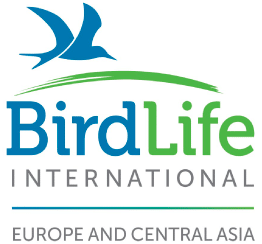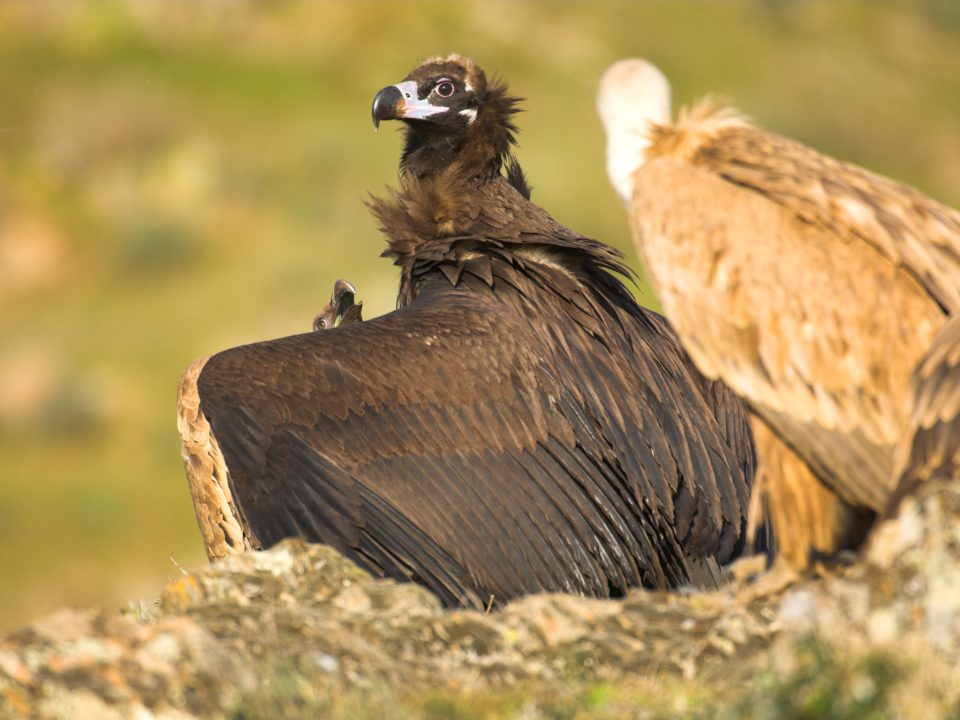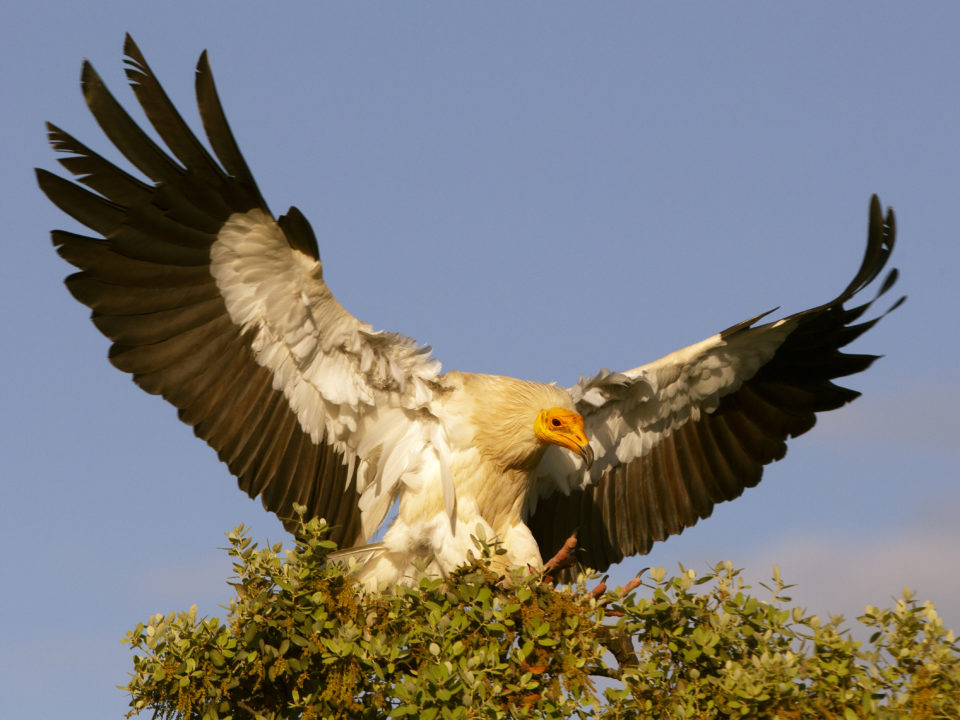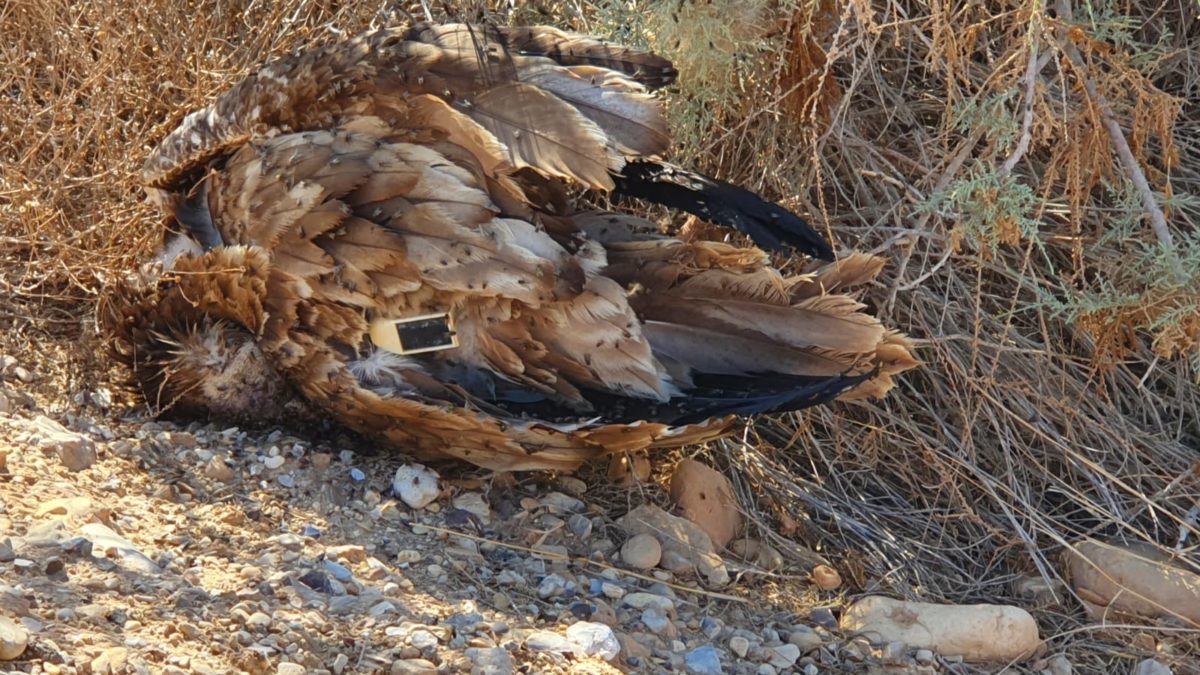
article by Egyptian vulture New LIFE
We followed the fall and spring migrations and wintering movements of 26 Egyptian Vultures through over 20 countries on three continents. During that period, 5 individuals perished and we investigated the threats that lead to their tragic end. The field investigations in some cases were held under difficult conditions in remote and hardly accessible areas. The results revealed that three birds were poisoned (Boris and Alolobad in Ethiopia, Jenni in Chad) and two birds were shot (Lucy in Ethiopia and Anahita in Lebanon).
Here is a short update of the movements and the fate of all tracked individuals:
- Iliaz is a wild adult Egyptian Vulture breeding in the Balkans. He spent the winter in Chad and successfully returned back to his breeding grounds in Greece
- Aoos is a wild adult bird breeding in Albania. Aoos also spent the winter in Chad and returned to its breeding territory in the Balkans
- Boris is a wild adult vulture breeding in Bulgaria. As usual, he migrated to Ethiopia and settled there for the winter. However, just before the onset of the spring migration, Boris was poisoned in a terrible incident.
- Jenny is a wild adult vulture breeding in Bulgaria as well. She usually spends the winter in Chad. However, this fall while still on migration she decided to feed in the Ennedi Plateau in northeastern Chad and got poisoned. The poison bait and other victims of this incident were not found.
- Lucky is a 3-year old wild vulture that was trapped and tagged in Bulgaria in 2020. In the autumn he migrated south and reached his wintering grounds in Sudan. This spring Lucky returned back to the Eastern Rhodopes in Bulgaria.
- Solomon is a juvenile vulture born in Bulgaria. He migrated south following the flyway along the eastern side of the Red Sea and spent the winter in Saudi Arabia and Yemen. In the spring he moved few hundred kilometers north but resigned in Saudi Arabia.
- Hedjet is a wild immature vulture. He is the foster sibling of Oriana. As expected for a bird at his age Hedjet spent the entire year in the wintering ground and was travelling over vast areas in Chad
- Oriana was released by fostering in 2019. She resigned in Chad for the winter. She made a short trip to Nile but returned back to her wintering ground in Chad.
- Zara is two years old captive-bred Egyptian Vultures released through delayed release in Bulgaria in 2020. She successfully conducted her first south migration and settled for the winter in the southern parts of Saudi Arabia and northern parts of Yemen. In spring Zara decided to migrate back north and reached Turkey.
- Izi is a one-year-old captive-bred individual released through the same method as Zara in 2020. She also completed her first south migration and spent the winter in Egypt near the emblematic lake Nasser. In the spring she also migrated north to Turkey
- Boyana is a 4-year old vulture released in Bulgaria in 2018. She spent the past summer in Turkey. On migration, she followed the eastern migration route along the Red Sea, crossed through Bab-el Mandeb into Africa and spent the winter in Sudan. In spring Boyana decided to return back to the release site for the first time since her release 3 years ago.
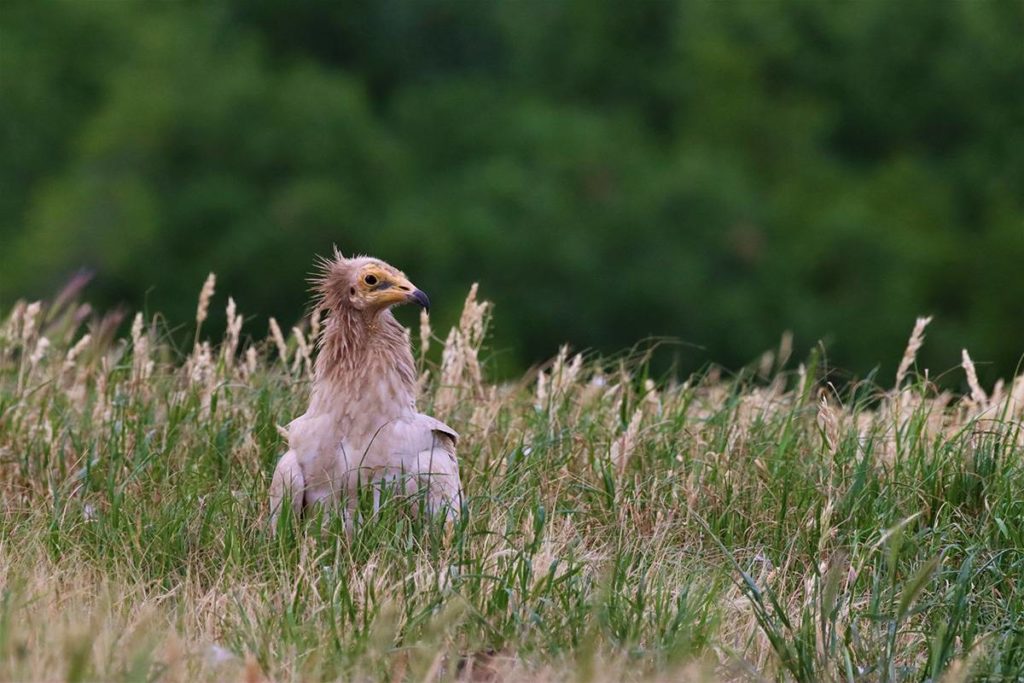
Egyptian Vulture ©Volen Arkumarev/ Egyptian vulture New LIFE
- Panteley is also a 4-year old bird released the same year as Boyana. He proved to be a great traveler and over the past few years visited many countries. Panteley spent the winter in Niger and in spring returned back to his release site in Bulgaria where they met with Boyana for the first time in three years. Now almost all adults are looking for a future breeding territory
- Andi was released through delayed release in 2019. He spent the first two years in the wintering grounds on the border between Sudan and South Sudan. However, this spring Andi decided to migrate north and reached the release site in Bulgaria becoming only the third release bird to return after Boyana and Panteley.
- Deni was released through hacking in 2020. It followed the traditional migration route for the species and reached its wintering grounds in Chad. Deni also visited Sudan on a few occasions. This year it decided to stay in Africa and we hope she will return to the release site next year.
- Neli is a captive-bred juvenile released through fostering in 2020 in Bulgaria. She started her fall migration in September but when she reached the Adrasan Peninsula in southern Turkey instead of following the coast she decided to try to cross the sea and eventually perished in the water.
- Anahita is Neli’s wild sibling. She also started her first south migration in September. However, when she was passing over Lebanon poachers shot her. Thanks to the GPS tracker on her back and an immediate reaction, she was found in very bad condition but was saved.
- Simeon is a captive-bred juvenile released through fostering in 2020. He chose a very challenging route for his first migration – over the Mediterranean Sea between Greece and Libya. Luckily the winds were on his side this day and he managed to cross the vast sea. He reached Niger where he spent the winter. Today Simeon is still in Niger and it seems that he will enjoy the African sun a little longer.
- Sava is the wild sibling of Simeon. He also safely reached the wintering grounds but chose to migrate over the traditional migration route – through the Middle East. Sava spent the winter in the southern parts of Sudan. However, in the spring unlike most of the youngsters on his age Sava decided to explore the north and made a spring migration to reach the Caucasus. Currently, Sava is still north of the Caucasus in Russia. This is an extraordinary journey for the Egyptian vultures born in Bulgaria as they usually returned to the Balkans or stay in Turkey but does not go so far east.
- Chuupa is an immature bird tagged in Ethiopia in 2019. He spent the last summer in Turkey and in the fall migrated back to Ethiopia. In the spring Chuupa followed the migration flyway along the western coast of Red Sea and returned back to Turkey. We can suppose that Chuupa is of Turkish origin.
- Dalol is another immature vulture tagged in Ethiopia. He spent the summer in Israel visiting different feeding stations for vultures. In the fall, Dalol migrated back to Ethiopia for the winter. This spring he returned again in Israel and we can suspect it is where he originates from.
- Alolobad is an immature Egyptian Vulture tagged in Ethiopia. Since we tagged him he has never left Ethiopia. However, in the winter Alolobad moved a few hundred kilometers south only to come across a poisoned carcass. He succumbed together with two Hooded Vultures and two Jackals. A pesticide was used to poison predators as retaliation. Read the full report on this case here.
- Lucy is a subadult vulture tagged in Ethiopia. Same as Alolobad she has not left Ethiopia since she was tagged. She was mostly staying in Afar region. One day we just lost a signal from Lucy and the field investigation revealed that she most probably was shot by the local people but the reasons for that act remained unknown.
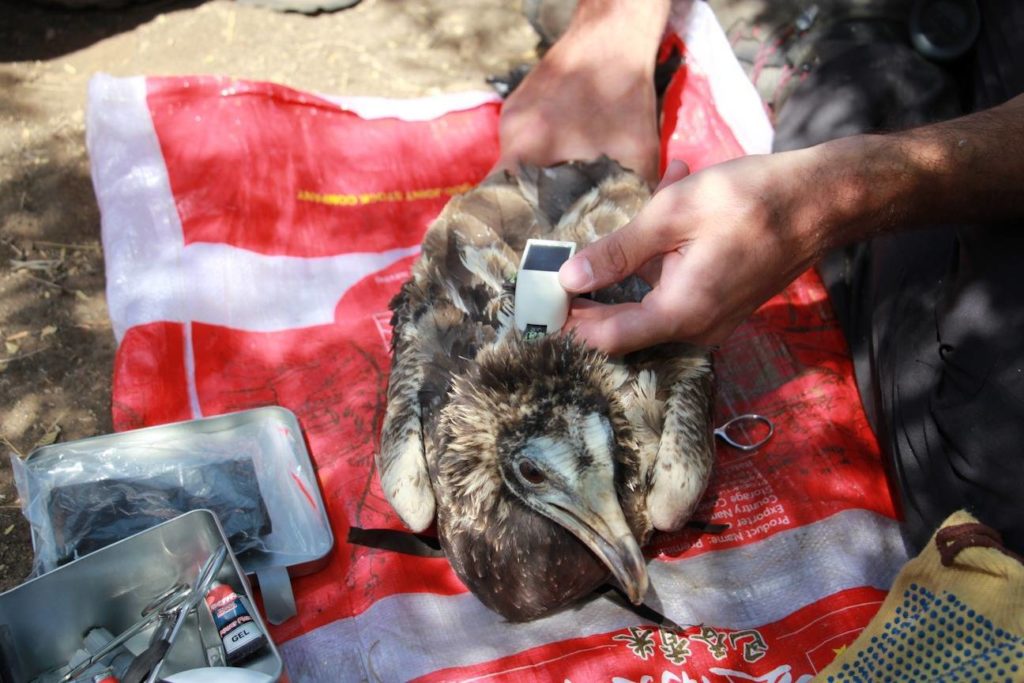
Egyptian Vulture ©C.Bougain /Egyptian vulture New LIFE
- Ertale is an adult Egyptian Vulture tagged in Ethiopia. Last year he settled in a breeding territory in Turkey. He got poisoned on a nearby rubbish dump but thanks to the immediate reactions of locals and zoo experts he was saved and after rehabilitation returned back to the wild. In the autumn Ertale migrated to the wintering grounds in Ethiopia. This spring he returned again back to his breeding territory in western Turkey near Eskisehir.
- Semera is an immature vulture tagged in Ethiopia. She has not left the country since she was tagged.
- Lubo is also an immature vulture tagged in Ethiopia. He has not left Ethiopia and mostly stays in the Danakil Desert.
- Basaka is another immature vulture tagged in Ethiopia. It stayed throughout the year in Afar but then visited Somalia and settled there for some time. From Somalia, Basaka moved to the Somali region in southern Ethiopia. It is probably staying in the area with limited GSM coverage because we rarely receive a signal from its tag.
Related posts
August 24, 2022
August 24, 2022
August 24, 2022
